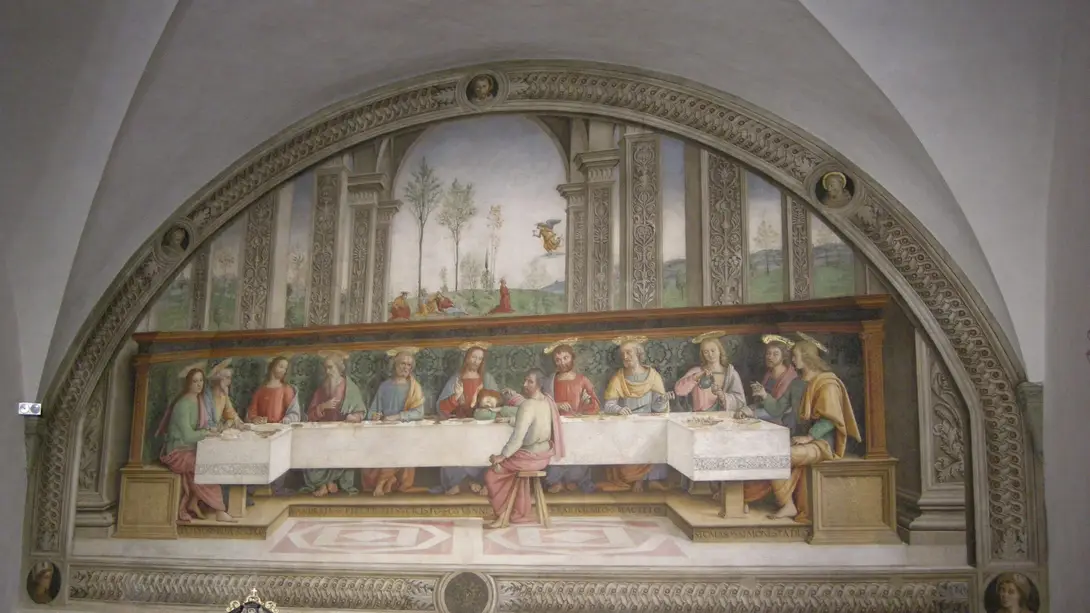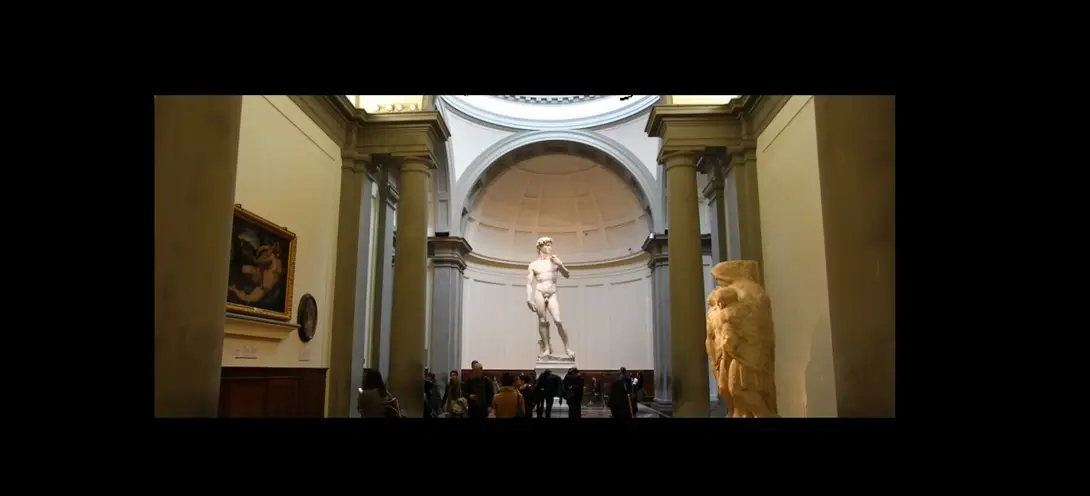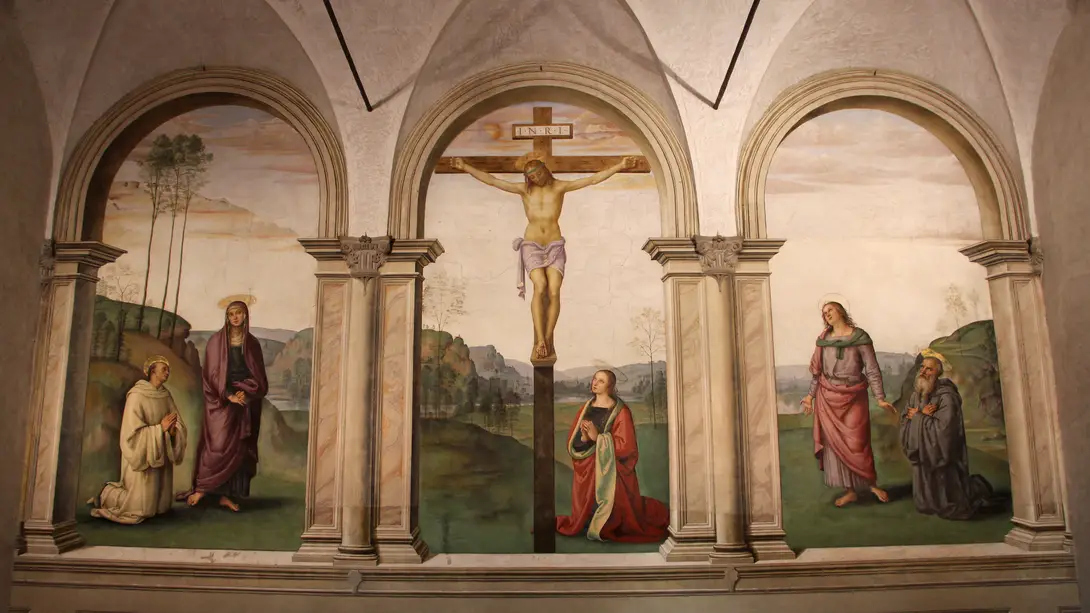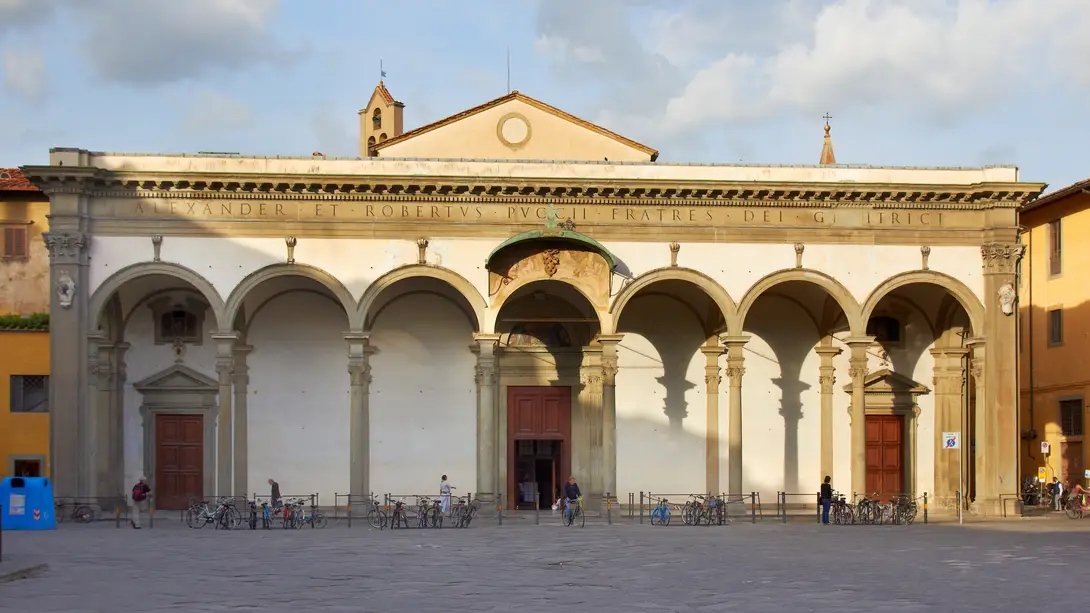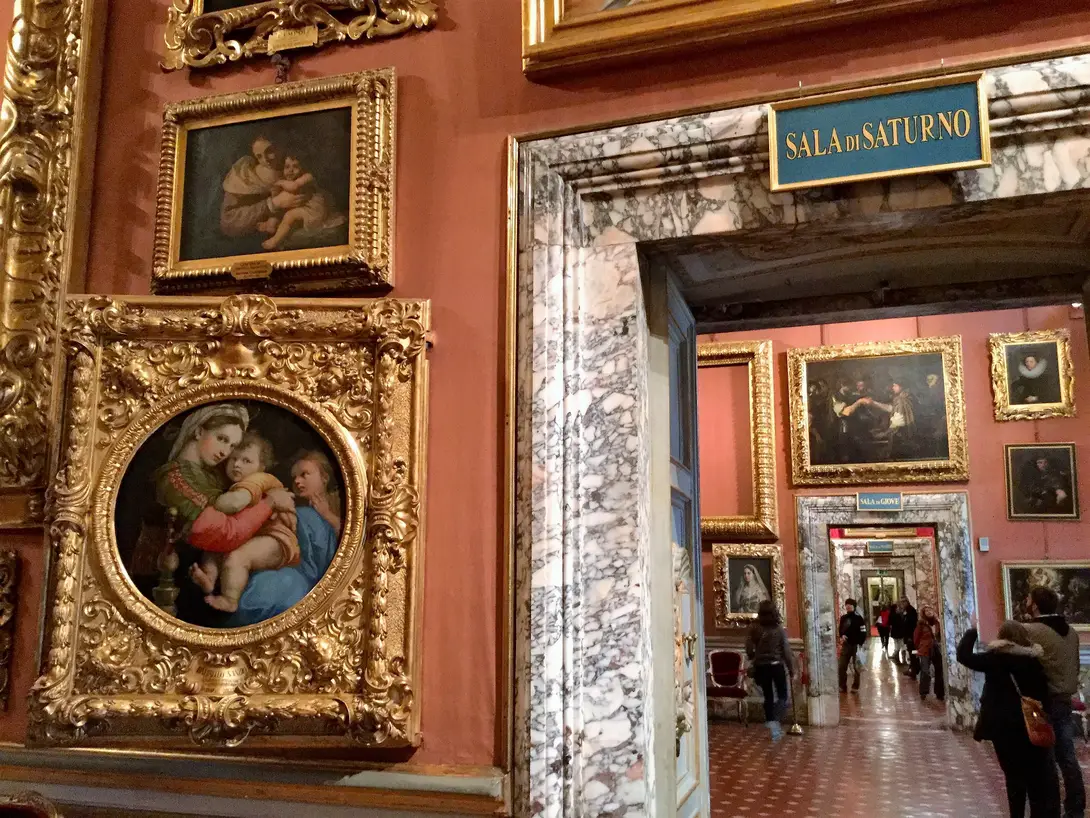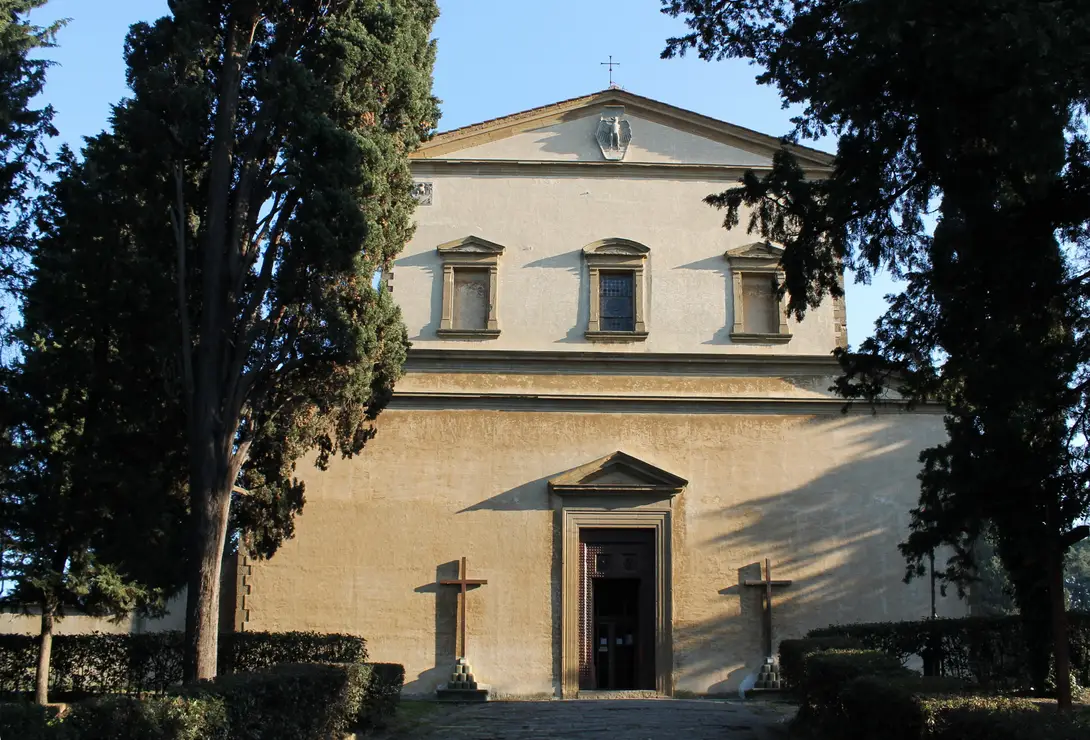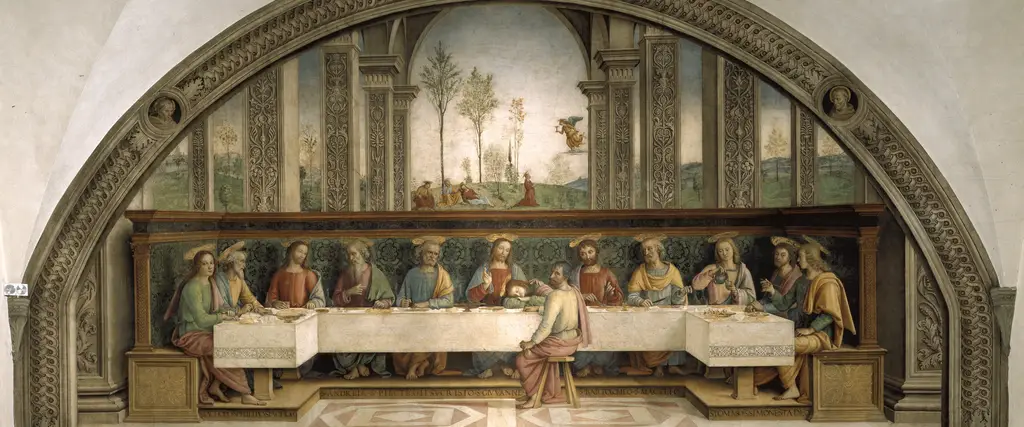
Perugino in Florence
This year marks the 500th anniversary of the death of the Perugino (1523), one of the most important Italian painters between the 15th and 16th centuries. He was particularly active in Florence, Perugia, and Rome and is also known for being the master of Raphael.
Born in Città di Castello around 1450, Perugino was initially influenced by Umbrian painting but also by other artists such as Piero della Francesca, who worked a lot in that region. The years spent in Florence at the workshop of Verrocchio was particularly important. Other notable artists like Leonardo da Vinci, Botticelli, Ghirlandaio, and Filippino Lippi also trained in this workshop. Perugino remained there until 1472, when he began his independent career.
Perugino arrived in Florence after producing a series of works of art in Umbria, particularly in Perugia, and in Rome, including the decoration of the side walls of the Sistine Chapel along with renowned Florentine artists like Botticelli and Ghirlandaio.
From 1493, Perugino lived in Florence, thanks in part to his flourishing workshop, where he realized a lot paintings, most of which are still found in the city today.
In the Cenacolo di Fuligno, he frescoed the splendid Last Supper. The Uffizi Gallery houses the highest number of Perugino's paintings in Florence, including the Agony in the Garden and the Pietà (created for the Convent of San Giusto alle Mura), the portrait of Francesco Delle Opere, and the Madonna and Child with St. John the Baptist and St. Sebastian. Perugino used his wife, Chiara Fancelli - daughter of the famous architect Luca -, as a model for many of his renowned Madonnas, characterized by perfect ovals, delicate expressions, and softly blended contours, which would later inspire his most famous pupil, Raphael. They married in Florence during those years.
The Palatine Gallery in Palazzo Pitti also boasts remarkable Perugino masterpieces, such as the intense Lamentation over the Dead Christ, the Magdalene (almost a contemporary portrait), and the Adoration of the Child, also known as the Madonna del Sacco.
Around 1495, when he frescoed the evocative Crucifixion in the chapter hall of Santa Maria Maddalena dei Pazzi, Perugino also created some paintings that are now housed in the Gallery of the Academy. These include the solemn Vallombrosa Altarpiece and part of the "Polyptych of the Santissima Annunziata" (the Deposition from the Cross, initially started by Filippino Lippi). The other side of the polyptych, the Assumption of the Virgin, is still located in the renowned Marian Sanctuary.
To complete this itinerary, we should also mention the stained glass windows, designed by Perugino, for the churches of Santo Spiritoand San Salvatore al Monte, depicting the Pentecost and St. John the Baptist, respectively.
.
The places
Stages
Cenacolo di Fuligno
The refectory of the former convent of the Tertiary Franciscans of Foligno is decorated with a 15th-century fresco of the Last Supper with the Agony in the Garden in the background; rediscovered in 1845 and originally thought to be the work of Raphael, it is now attributed to Pietro Perugino. The refectory also houses 16th-century paintings by artists from Florence and other areas who were influenced by Perugino.
Galleria dell'Accademia di Firenze - Academy gallery
The Academy Gallery (Galleria dell'Accademia) in Florence is known around the world as the ‘Michelangelo Museum’ (for the statues of David and the Prisoners), but it is actually much more than that.
It stands on the site where two convents originally stood, next to the Academy of Fine Arts, which still has its seat here. The first nucleus of the collection was formed in 1784 with a series of works of art, donated by the Lorraine Grand Duke Pietro Leopoldo; in 1873 Michelangelo's David, a true icon of western art, created by the artist between 1501and 1504, was moved here (from Piazza Signoria, replaced by a copy). Later, other works by Michelangelo arrived at the Accademia Gallery: the Four Prisoners (conceived for the tomb of Pope Julius II), the St. Matthew and the Palestrina Pietà, all unfinished works by the great artist, representing Michelangelo's famous ‘unfinished’.
In the Sala del Colosso is the original sketch of the Rape of the Sabine Women by Giambologna, together with numerous paintings of 15th and 16th century Florentine painting (Paolo Uccello, Botticelli, Perugino, Ghirlandaio, Filippino Lippi). Other important 16th-century paintings are exhibited along the Galleria dei Prigioni and in the Tribuna del David, adjacent to the Giposteca Bartolini, where numerous plaster casts by the famous 19th-century sculptor (and other contemporary artists) are collected.
In the Halls of the 13th and 14th centuries, numerous paintings can be admired, including works by important followers of Giotto (Tadeeo Gaddi, Bernardo Daddi, Orcagna) up to the International Gothic of the early 15th century. Don't miss the Museum of Ancient Musical Instruments (from the nearby Luigi Cherubini Music Conservatory, and even earlier from the Grand Ducal and Lorraine collections): about fifty pieces, including a viola and cello by Antonio Stradivari, a spinet and a forte-piano by Bartolomeo Cristofori, the inventor of the piano.
Crucifixion by Perugino
Inside the complex of S. Maria Maddalena de' Pazzi, founded in 1256 and renovated in Renaissance forms at the end of the fifteenth century, there is the Chapter House decorated, around 1495, with a sublime Crucifixion, frescoed by Perugino (master of Raphael).
The scene, depicting Jesus on the cross, the Virgin, Saint John, the Magdalene and Saints Bernardo and Benedetto, takes place against the background of a typical Umbrian landscape, with rolling hills, rocks and streams. In the same room are also kept the detached fresco and its sinopia depicting Saint Bernard receiving the body of Christ, probably painted by a pupil of Perugino.
Basilica della SS. Annunziata
The basilica is the main Marian shrine in Florence. It was founded in 1250 by the "Seven Saints" of the order of the Servants of Mary; with its facade, contiguous to the Brunelleschi's facade of the Spedale degli Innocenti, it constitutes one of the sides of the scenographic, homonymous square.
The frescoed cycle of the Chiostrino dei Voti, before the entrance to the church, is an anthology of the early Florentine mannerism, with fine frescoes by Andrea del Sarto, Pontormo, Rosso Fiorentino.
he interior, mainly decorated in the Baroque era, contains numerous masterpieces, including the highly venerated fourteenth-century image of the Annunciation, inside the temple designed by Michelozzo.
On the occasion of the Jubilee 2025 the basilica is a jubilee church.
The Uffizi Gallery
With its immense artistic legacy, the Uffizi Gallery, now The Uffizi, is one of the most important museums in the world. Following a substantial reorganization in the 17th century, which led to the transfer of some collections (arms, scientific instruments, archaeological finds, ancient and modern bronzes) to other sites and the establishment of new museums, the Uffizi mainly became a picture gallery, with thousands of works ranging from the 13th to the 18th centuries. After the suppression of churches and convents in the 18th and 19th centuries, many works of ecclesiastical provenance swelled the gallery’s collections; other important paintings were acquired at the beginning of the 20th century.
Masterpieces held in the museum include: the large altarpieces of Cimabue and Giotto; 14th-century Sienese art (including a fine Annunciation by Simone Martini); a rich spectrum of 15th-century art from Tuscany and central Italy, with works by Masaccio and Masolino (Madonna and Child with Saint Anne), Filippo Lippi, Botticelli (Birth of Venus and the Primavera), Piero della Francesca (Portraits of Duke Federico da Montefeltro and his Duchess Battista Sforza of Urbino) and Gentile da Fabriano (Adoration of the Magi).
The rooms devoted to 16th-century painting contain works by the masters of the principal Italian schools: from the Adoration of the Magi by Leonardo da Vinci to Michelangelo and Raphael, while Titian, with his Venus of Urbino, Veronese and Tintoretto represent the flowering of painting in the Veneto. Foreign artists are also well represented, with works by Albrecht Dürer, Hans Holbein and El Greco.
The series of 17th-century works opens with Caravaggio’s Bacchus, and features a rich range of work from the major European schools, including Rubens, Van Dyck and the self-portraits by Rembrandt. Finally, Canaletto and Guardi, together with Longhi and Tiepolo, offer a sample of 18th-century art. In addition, the gallery holds ancient sculptures, miniatures and tapestries from the Medici collections. Work is currently underway on the ‘New Uffizi’, which will double the amount of exhibition space, permitting the display of works previously inaccessible to the public.
A map of suggested paths in the gallery - including their duration - is available on the Uffizi Official Website.
Palatine Gallery and Royal Apartments - Pitti Palace
The Palatine Gallery and the Royal Apartments occupy the whole of Palazzo Pitti’s piano nobile. The gallery was established in the late 18th and early 19th centuries by the Lorraine, who hung a mass of artworks, principally from the Medici collections begun around 1620, in the reception rooms. There are works by Raphael, Titian, Caravaggio, Rubens, Pietro da Cortona and other Renaissance and 17th-century artists from Italy and elsewhere in Europe.
The walls of the rooms are plastered with paintings, in keeping with the tradition of 17th-century picture galleries: they are not arranged chronologically or by school, but reflect the personal taste of the collectors. There is a fine Madonna and Child by Filippo Lippi, some of Raphael’s most famous paintings, including the so-called Madonna del Granduca and La Velata, a Young Saint John the Baptist by Andrea del Sarto, Titian’s La Bella and portraits by Veronese and Tintoretto.
The Royal Apartments consist of fourteen rooms in the right wing of the palace, formerly the private residence of the ruling families, and are furnished with furniture, trappings and artworks ranging from the 16th to 19th centuries.
Basilica di Santo Spirito
The Augustinian complex of Santo Spirito of one of the great religious and artistic monuments of 15th century Florence.
The basilica was designed by Brunelleschi and begun in 1444, but was still incomplete when he died two years later. Leonardo da Vinci and Michelangelo loved this church very much and Bernini defined it as the most beautiful church in the world. It houses various artworks: among them a Virgin with child and saints by Filippino Lippi; a special pathway is also open to the visit: it includes the Cloister of Parigi, the Refectory with the fresco of the Last Supper and the Sacristy where people can admire young Michelangelo's Crucifix.
Church of San Salvatore al Monte
San Salvatore al Monte is an important basilica near san Miniato, in a grove of cypresses. The building is a work by Simone del Pollaiolo, very loved by Michelangelo who called it his "bella villanella (his pretty country maid)".
